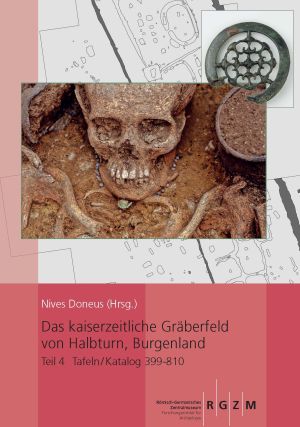
How to Cite
License

This work is licensed under a Creative Commons Attribution-ShareAlike 4.0 International License.
Published
Downloads
Das kaiserzeitliche Gräberfeld von Halbturn, Burgenland
Teil 4: Tafeln/Katalog 399-810
At that time, the Roman cemetery of Halbturn I belonged to the western part of Pannonia; the ancient city of Carnuntum was about 30 km away. The cemetery was completely investigated by systematic excavations, which is unusual for this region.
The finds show a great variability in burial customs, which can be seen in the positioning of the burials and the buried, as well as in the different efforts invested in the construction of the tombs. These characteristics depend, on the one hand, on the chronological period in question (2nd-5th century) and, on the other, on the personal status of the deceased (according to age at death, sex and physical disabilities). Particularly unusual are the numerous infant and child graves.
In addition to the archaeological-typological evaluation, the monograph offers important insights into life at the time: for example, a child's amulet is the oldest evidence of Jewish faith in Austria to date. Nutrition, diseases and injuries - whether caused by agricultural activities or domestic violence - are also described in detail, as well as considerations on animal breeding and husbandry, cultivated and wild plants, stone monuments, etc. Last but not least, the site, which was previously recorded by aerial archaeology, geophysical prospection and systematic field surveys, offers numerous further insights into the associated agricultural holdings.






